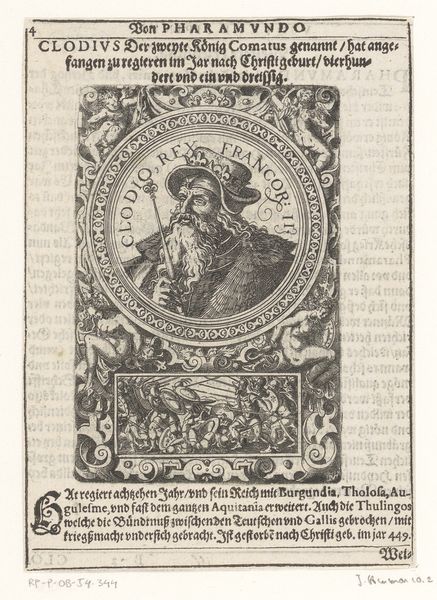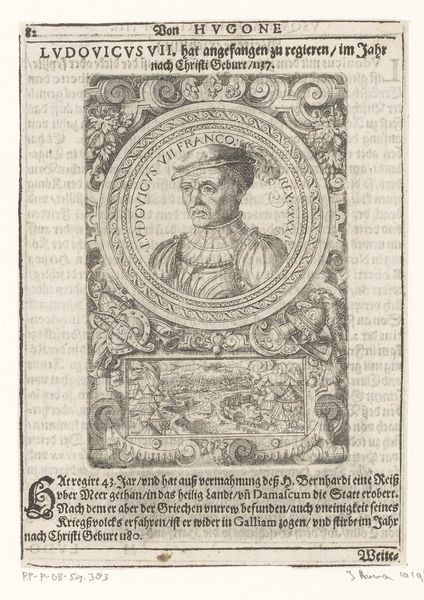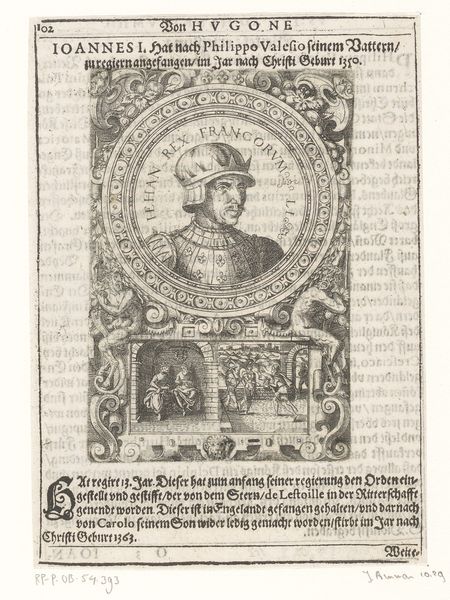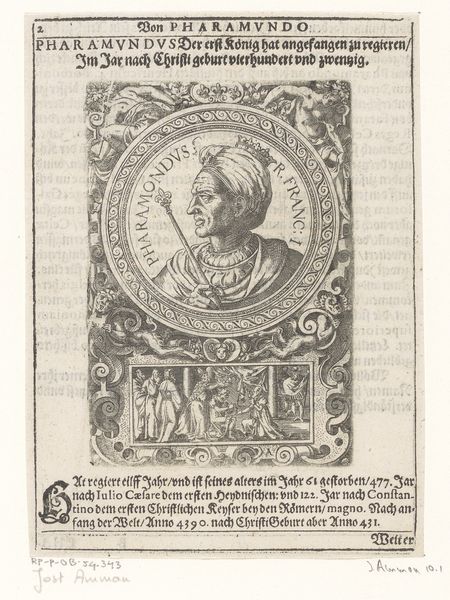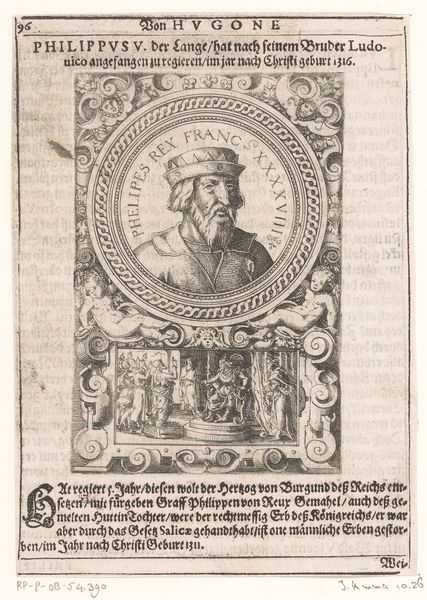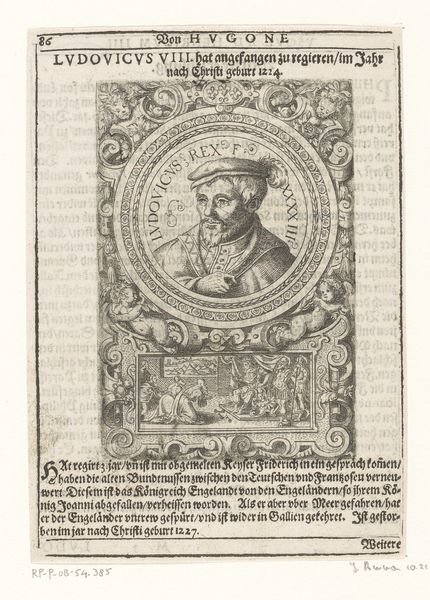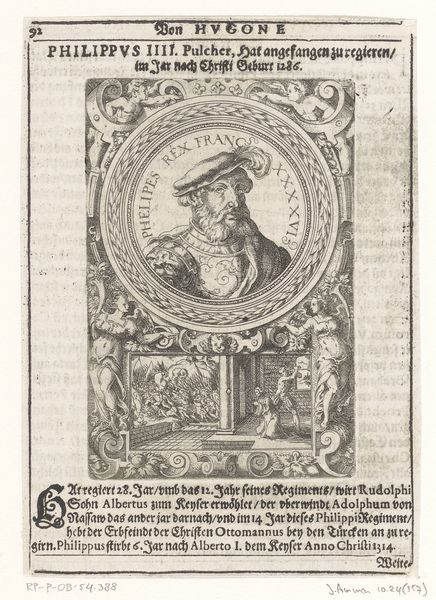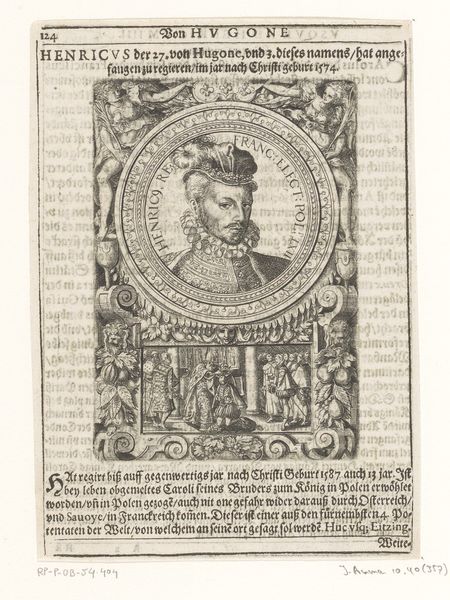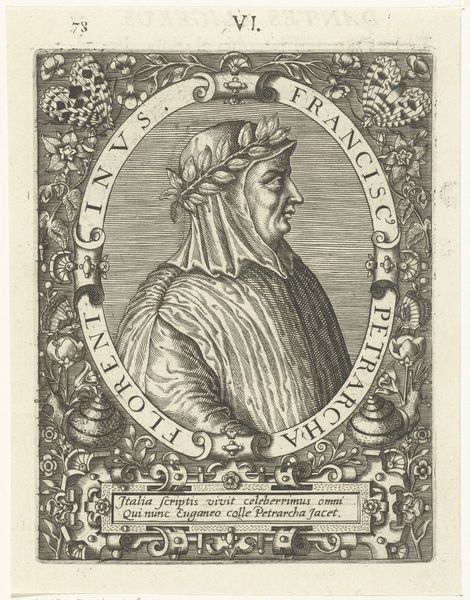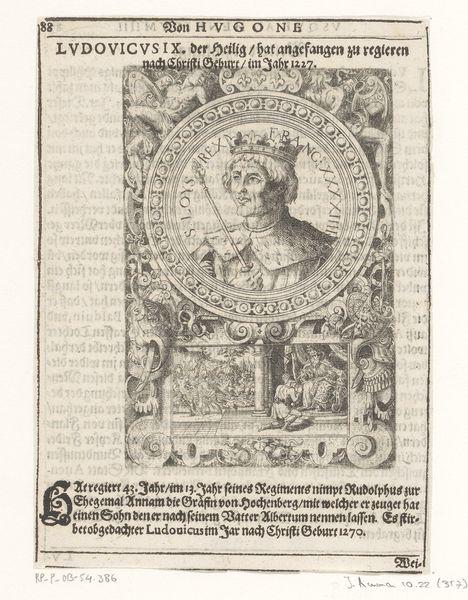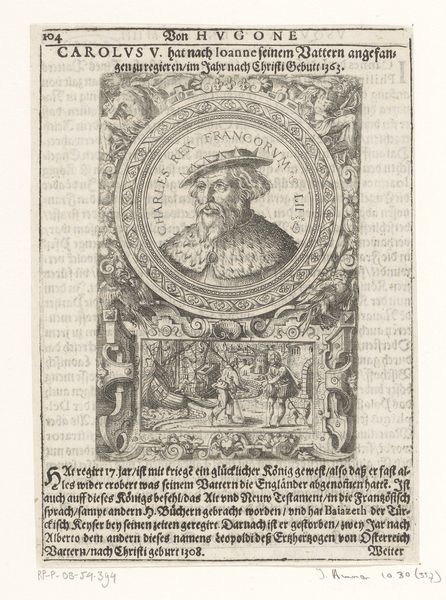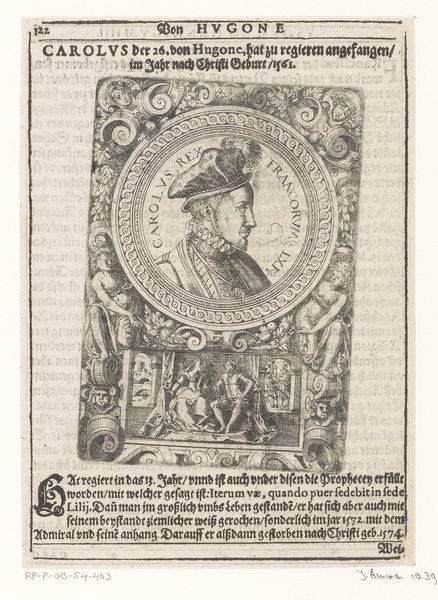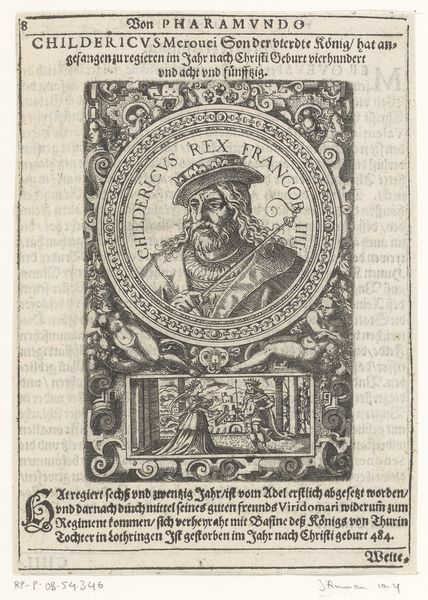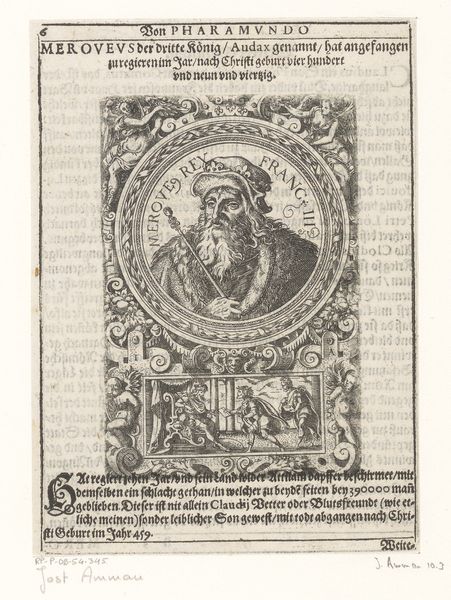
print, engraving
#
portrait
#
medieval
# print
#
pen illustration
#
history-painting
#
engraving
Dimensions: height 120 mm, width 80 mm
Copyright: Rijks Museum: Open Domain
Curator: Let's turn our attention to this engraving currently on display here at the Rijksmuseum: Jost Amman’s "Portret van Karel IV, koning van Frankrijk en Navarra," dating back to 1598. It's a fascinating example of portraiture within the print medium. Editor: It immediately strikes me as quite dense. The figure of the king himself seems almost overwhelmed by the ornate details crammed into this small space. A sense of compressed history, perhaps? Curator: Indeed, the density is key to its meaning. Consider the use of line: Amman's confident engraving style emphasizes detail to portray the subject and ornate design. The King's attire, including that remarkable turban, suggests both royalty and an engagement with otherness. Editor: It’s a potent way of creating a visual language around power and status. How would this image function? Who was it intended to reach? Was it purely commemorative, or part of a broader political project? Curator: Likely the latter. Prints were crucial for disseminating information and solidifying reputations. The detailed depiction of Charles IV would have been circulated widely, reinforcing his image as a legitimate ruler both within France and abroad, particularly important given the turbulent history of the French monarchy. Also notice the inclusion of an apparent scene with figures beneath the portrait of Charles IV himself. This scene alludes to specific events or values associated with the King. It creates narrative, lending historical context. Editor: Ah, it appears that even the typography plays its own visual game here. It's strategically and artistically incorporated. A holistic artwork indeed! Did Amman also engrave the inscriptions himself, or were collaborators involved to add different skills to the artwork creation? Curator: Determining Amman's exact involvement is complex, as collaborative work was common. Although he conceived the drawing, specialized craftsmen would often incise inscriptions. However, regardless of hand, Amman has effectively constructed Charles as a symbolic figure and a signifier of power, inviting us to interpret not only the King himself, but the role that the monarch played in the broader political theater. Editor: Seeing it through your eyes really highlights how image functions within the cultural machinery. For me, looking at this has reminded me of the political intentionality behind these "historical" documents. Curator: For me it revealed more about the language of detail in forming our understanding of power. The careful rendering that offers legitimacy but in ways we might not think of right away.
Comments
No comments
Be the first to comment and join the conversation on the ultimate creative platform.
